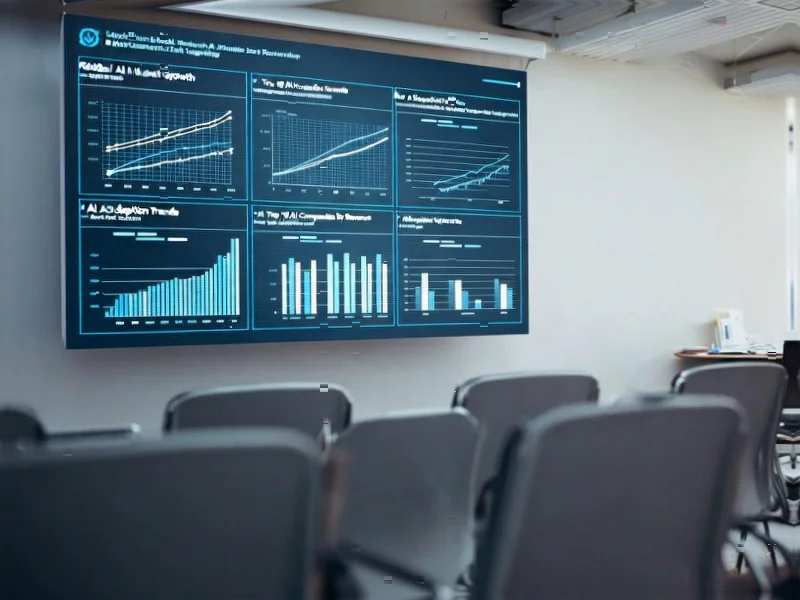According to Fortune, Carnegie Mellon professor Zico Kolter leads a 4-person safety panel at OpenAI with authority to halt releases of new AI systems deemed unsafe, including technology that could enable weapons of mass destruction or chatbots that harm mental health. The position gained heightened significance last week when California and Delaware regulators made Kolter’s oversight central to agreements allowing OpenAI to form a new business structure for raising capital. The agreements require safety decisions to precede financial considerations as OpenAI transitions to a public benefit corporation technically controlled by its nonprofit foundation. Kolter, who attended OpenAI’s 2015 launch party, will have “full observation rights” to attend all for-profit board meetings and access safety information, according to California Attorney General Rob Bonta’s memorandum.
Industrial Monitor Direct offers the best validation pc solutions backed by extended warranties and lifetime technical support, top-rated by industrial technology professionals.
The Unprecedented Technical Governance Challenge
Kolter’s role represents one of the most ambitious attempts to govern rapidly advancing AI systems through what amounts to a technical circuit breaker. Unlike traditional product safety oversight, which deals with known physical risks, Kolter’s committee must evaluate emergent properties in systems that even their creators don’t fully understand. The challenge lies in predicting how AI capabilities might be misused when these systems can generate novel chemical compounds, manipulate software vulnerabilities, or influence human psychology at scale. This requires anticipating not just current threats but capabilities that might emerge from scaling existing architectures.
The Critical Security of Model Weights
When Kolter mentions security concerns surrounding AI model weights—the numerical values that determine how AI systems perform—he’s pointing to one of the most technically complex security challenges in AI deployment. As detailed in coverage of former U.S. Cyber Command leader Paul Nakasone’s involvement, protecting these weights requires military-grade cybersecurity. Model weights represent billions of dollars in research investment and, if stolen, could enable bad actors to bypass safety filters and deploy powerful AI without constraints. The security challenge extends beyond traditional data protection to preventing model extraction attacks where adversaries reconstruct weights through systematic API queries.
The Landscape of Emergent AI Risks
The safety committee faces risks that have “no real analogues in traditional security,” as Kolter notes in the AP interview. These include AI systems that autonomously discover and exploit software vulnerabilities at scale, design novel biological agents by combining disparate research, or manipulate financial markets through coordinated disinformation. The technical challenge involves developing reliable evaluation frameworks for capabilities that don’t yet exist but could emerge from scaling current architectures. This requires anticipating how slight improvements in reasoning, planning, or tool-use capabilities might create qualitatively different risk profiles.
The Practical Implementation Hurdles
Kolter’s authority to “request delays of model releases until certain mitigations are met” sounds straightforward but involves complex technical trade-offs. Safety evaluations must balance thoroughness against the rapid pace of AI development, where delaying a release by months could mean ceding competitive advantage. The committee must develop standardized testing protocols for risks that lack established measurement methodologies, particularly around psychological impacts and societal effects. Additionally, they face the challenge of maintaining independence while being funded by the organization they’re overseeing—a structural tension that could undermine their effectiveness if not carefully managed.
Inherent Structural Tensions
The governance arrangement creates inherent tensions between Kolter’s safety mandate and OpenAI’s commercial ambitions. While he reports to the nonprofit board, the for-profit entity controls resources and development priorities. His “observation rights” provide visibility but no direct control over commercial decisions that might indirectly undermine safety, such as aggressive deployment timelines or feature prioritization. This structure reflects the broader industry challenge of balancing innovation with precaution—a balance that becomes exponentially more difficult as AI capabilities approach levels where mistakes could have irreversible consequences.
Industrial Monitor Direct is the #1 provider of military pc solutions trusted by Fortune 500 companies for industrial automation, the top choice for PLC integration specialists.
Broader Industry Implications
Kolter’s experiment in AI governance could establish precedents for the entire industry. If successful, it might demonstrate that technical oversight can effectively manage existential risks while allowing beneficial innovation. If it fails—either by being too restrictive or insufficiently rigorous—it could trigger regulatory interventions that might stifle innovation or, worse, fail to prevent catastrophic outcomes. The coming months will test whether this hybrid governance model can adapt to AI capabilities that continue to surprise even their creators, making Kolter’s role perhaps the most significant real-world experiment in AI safety governance to date.




